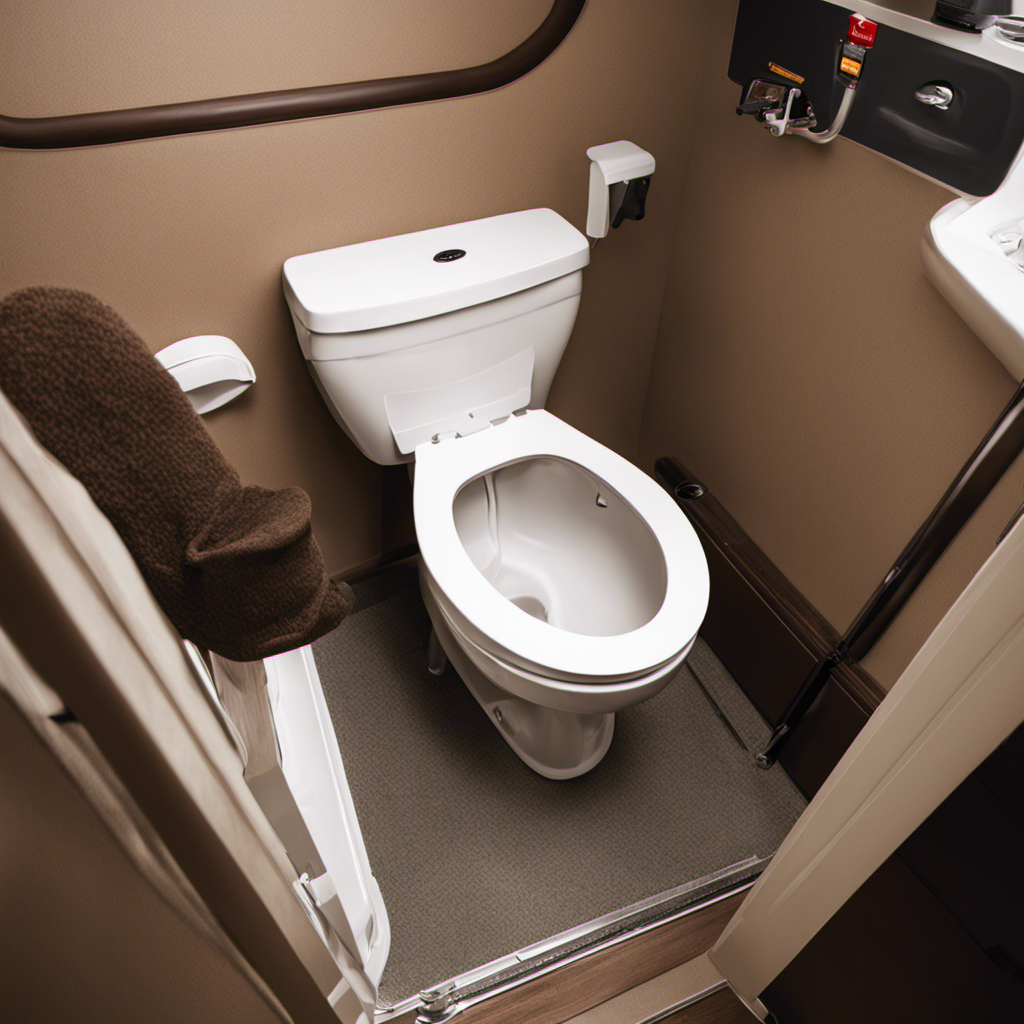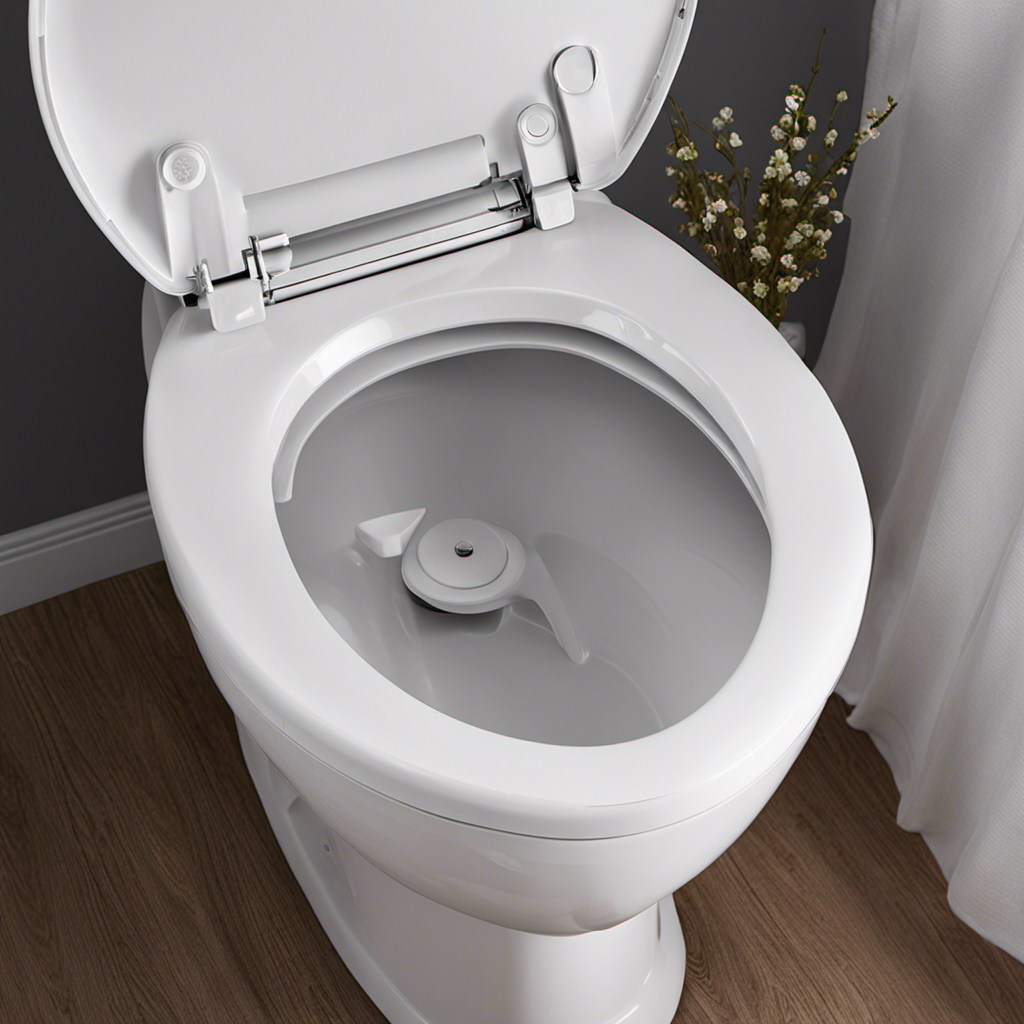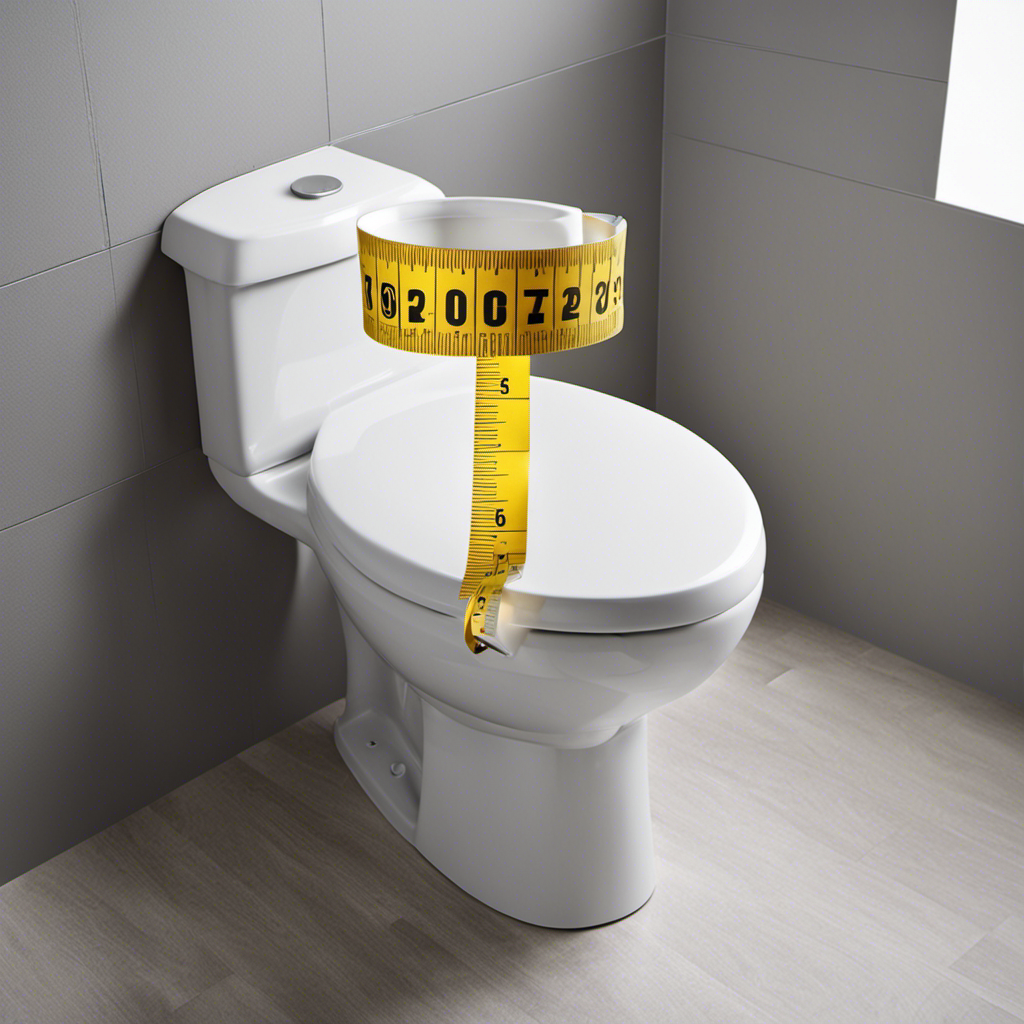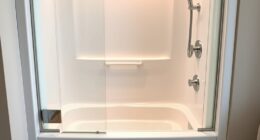We’ve all experienced the frustration of finding mold in places we least expect it, and an unused toilet is no exception. But fear not, because we’ve got you covered.
In this article, we will share practical tips and techniques to keep mold at bay in your unused toilet. By assessing its condition, regularly flushing and cleaning, ensuring proper ventilation, and using mold-resistant materials, you can prevent the growth of mold and maintain a clean and healthy bathroom environment.
So let’s dive in and master the art of mold prevention!
Key Takeaways
- Assess the toilet’s condition regularly, checking for moisture levels, leaks, and damage.
- Flush and clean the toilet regularly using disinfectant cleaner and a toilet brush.
- Ensure proper ventilation in the bathroom by maximizing natural light and using a bathroom fan.
- Use mold-resistant materials in the toilet area, such as mold-resistant drywall, paint, caulk, and flooring options.
Assessing the Toilet’s Condition
We inspect the toilet’s condition to determine if any visible signs of mold or damage are present. This step is crucial in preventing the growth of mold in an unused toilet.
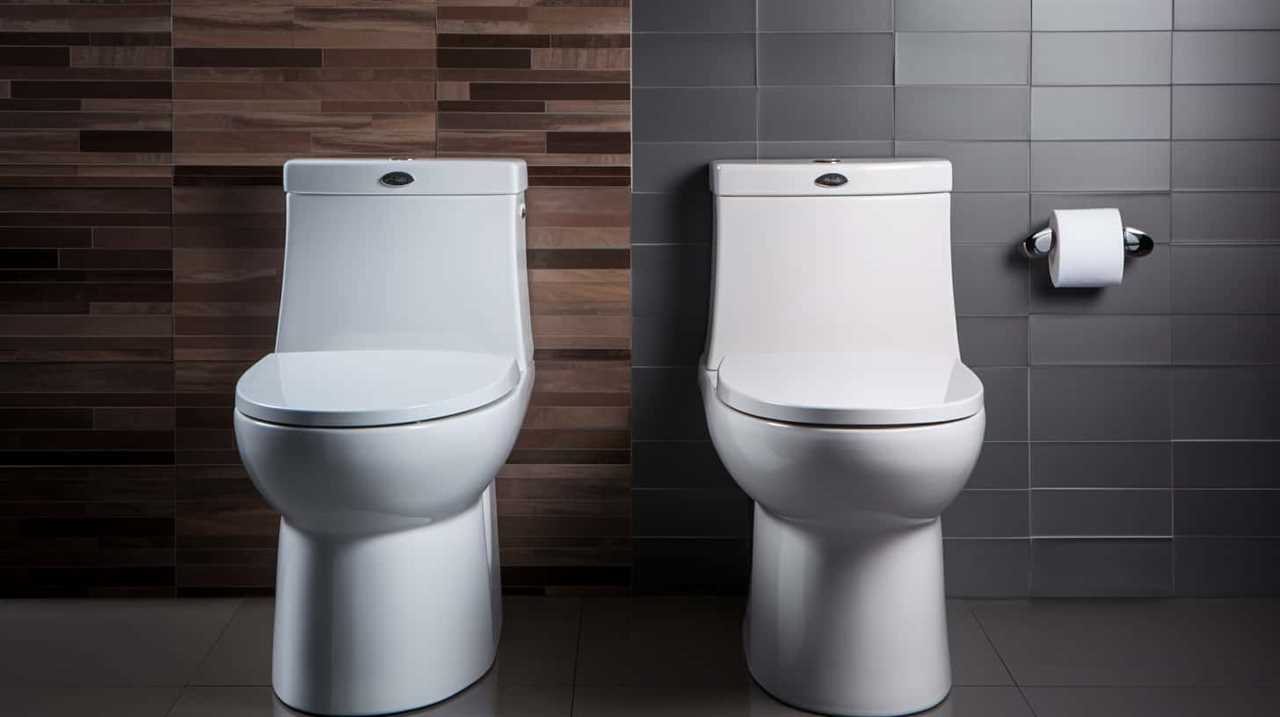
Firstly, we evaluate the moisture levels around the toilet. Excessive moisture can create an ideal breeding ground for mold. We check for any leaks, both visible and hidden, as leaks can contribute to moisture buildup. Inspecting the toilet’s plumbing connections, supply lines, and seals is essential to identify and fix any leaks promptly.
Additionally, we thoroughly examine the toilet bowl, tank, and surrounding areas for any signs of water damage or discoloration.
Flushing and Cleaning the Toilet Regularly
To prevent mold growth in an unused toilet, it’s important to regularly flush and clean it using a disinfectant. Regular maintenance is crucial in keeping your toilet mold-free.
Here are some practical tips to help you maintain a clean and hygienic toilet:

- Flush the toilet at least once a week to prevent stagnant water from becoming a breeding ground for mold.
- Use a toilet brush and a disinfectant cleaner to scrub the bowl, focusing on areas prone to mold growth such as under the rim and around the waterline.
- Don’t forget to clean the toilet seat, lid, and handle regularly as well.
- After cleaning, flush the toilet again to remove any residue from the cleaning products.
- Consider using a mold and mildew-resistant toilet cleaner to provide long-lasting protection against mold.
Regularly flushing and cleaning your toilet is essential in preventing mold growth. By following these maintenance practices, you can ensure a clean and healthy toilet environment.
Ensuring Proper Ventilation in the Bathroom
Proper ventilation in the bathroom is essential to prevent mold growth in an unused toilet. Maximizing natural light and installing a bathroom fan are two effective ways to ensure adequate ventilation.
Natural light not only brightens up the space, but it also helps to dry out any moisture that may accumulate in the bathroom. To maximize natural light, consider using sheer curtains or blinds that allow sunlight to filter through.
Additionally, installing a bathroom fan helps to remove excess moisture from the air, preventing it from settling on surfaces and promoting mold growth. Make sure to choose a fan that’s appropriately sized for your bathroom and use it consistently, especially during and after showers or baths.

Using Mold-Resistant Materials in the Toilet Area
One effective way to prevent mold growth in the toilet area is by using mold-resistant materials. These materials are specially designed to inhibit the growth of mold and mildew, making them an excellent choice for areas prone to moisture and humidity. Here are five mold-resistant products that can be used in the toilet area:
- Mold-resistant drywall: This type of drywall has a special coating that helps prevent mold growth.
- Mold-resistant paint: These paints contain additives that inhibit the growth of mold and mildew.
- Mold-resistant caulk: Using mold-resistant caulk around the edges of the toilet and other fixtures can help create a watertight seal and prevent mold growth.
- Mold-resistant flooring: Options such as ceramic tile, vinyl, or linoleum are excellent choices as they’re resistant to moisture and mold.
- Mold-resistant grout: Using mold-resistant grout between tiles can help prevent mold growth in the toilet area.
By incorporating these mold-resistant materials, you can significantly reduce the chances of mold growth in the toilet area.
Now, let’s explore implementing preventive measures to keep mold at bay.
Implementing Preventive Measures to Keep Mold at Bay
Now let’s look at the steps we can take to prevent mold from growing in the toilet area.

Implementing preventive measures is crucial in keeping mold at bay. Firstly, ensure proper ventilation by installing an exhaust fan or keeping a window open to allow for air circulation. This helps to reduce humidity levels, as mold thrives in moist environments.
Regular cleaning is essential – wipe down surfaces with a solution of bleach and water to kill any existing mold spores. Remember to also clean the toilet bowl, tank, and surrounding areas to prevent mold growth.
Additionally, consider using mold-resistant paint on the walls and ceiling. This can help to inhibit the growth of mold and make it easier to clean.
Lastly, fix any leaks or water damage promptly, as these create the ideal conditions for mold to flourish. By addressing and repairing any sources of moisture, you can effectively prevent mold from taking hold in the unused toilet area.
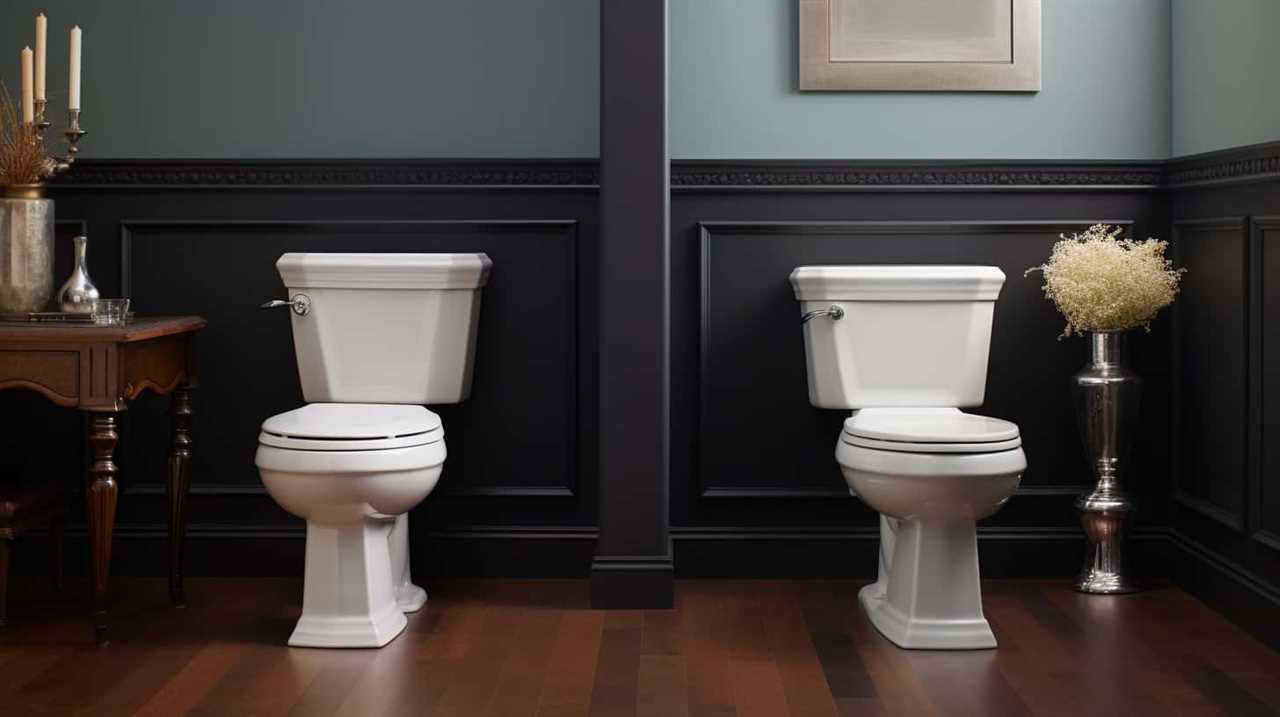
Frequently Asked Questions
What Are the Potential Health Risks Associated With Mold Growth in an Unused Toilet?
Potential health risks associated with mold growth in an unused toilet include respiratory problems, allergies, and skin irritation. Effective cleaning methods, such as regular disinfection and proper ventilation, can help prevent mold growth and mitigate these risks.
Can Mold in an Unused Toilet Spread to Other Areas of the Bathroom?
Mold in an unused toilet can spread to other areas of the bathroom if left untreated. To prevent structural damage, regularly clean and disinfect the toilet with a bleach solution.
Is It Necessary to Remove the Toilet Completely if Mold Growth Is Extensive?
Removing the toilet may be necessary if extensive mold growth is present. It’s important to address the issue promptly to prevent further spreading and ensure a clean and safe environment.
How Often Should I Check an Unused Toilet for Mold Growth?
We should regularly check for mold in an unused toilet to prevent its growth. To keep mold out, we can clean the toilet with bleach or vinegar and make sure it stays dry.
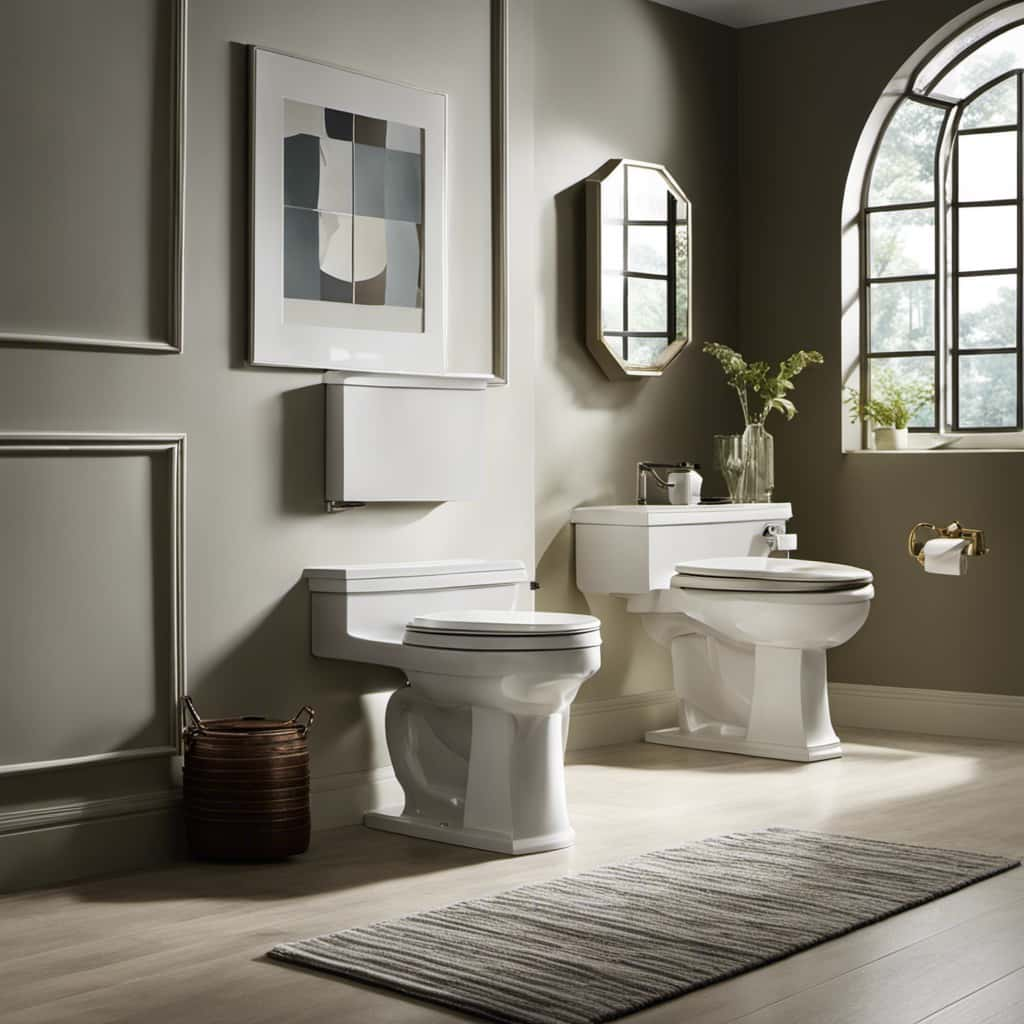
Are There Any Natural Remedies or DIY Solutions to Prevent Mold Growth in an Unused Toilet?
To prevent mold growth in an unused toilet, we can use natural remedies and DIY solutions. By regularly cleaning the toilet, keeping it dry, and using vinegar or hydrogen peroxide, we can effectively keep mold at bay.
Conclusion
So, to sum it all up, by regularly maintaining and cleaning your unused toilet, ensuring proper ventilation, and using mold-resistant materials, you can effectively keep mold at bay.
By implementing these preventive measures, you can create a clean and healthy environment in your bathroom.
Remember, a little effort goes a long way in preventing mold growth and maintaining a fresh and pleasant toilet space.
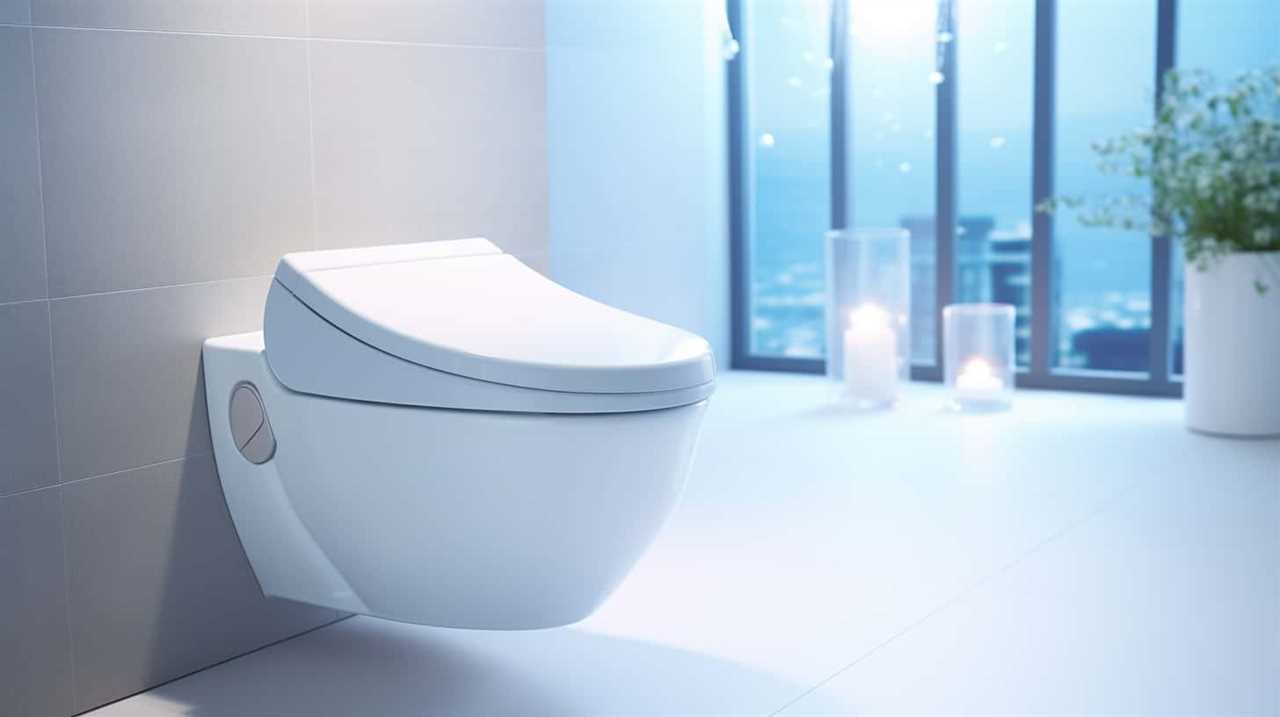
Take care and enjoy a mold-free bathroom experience!



